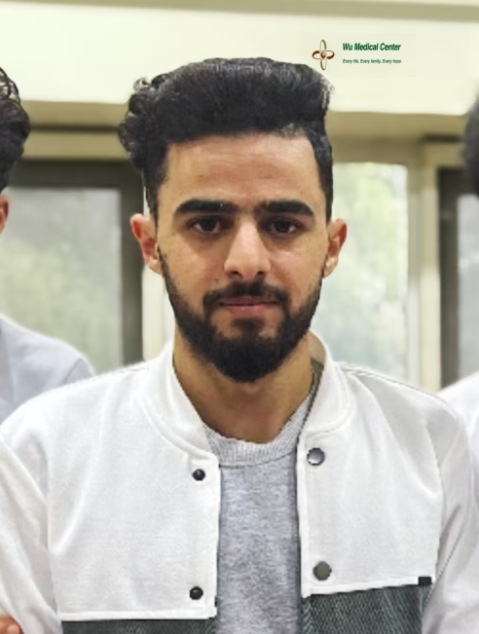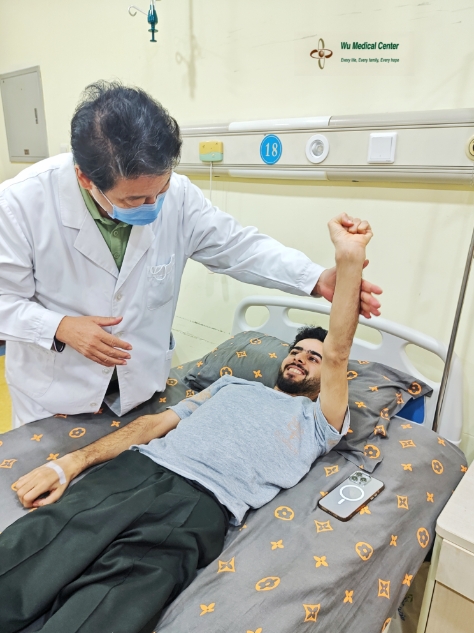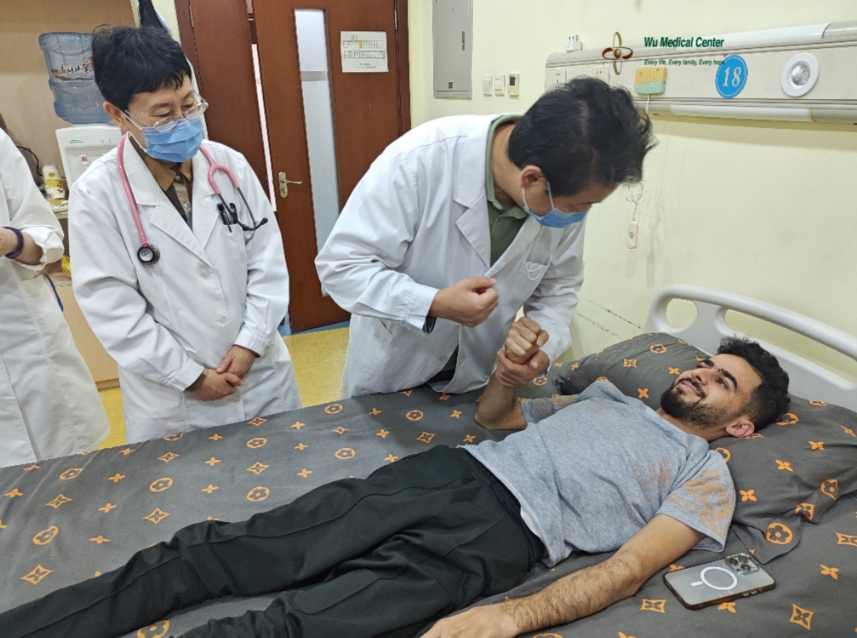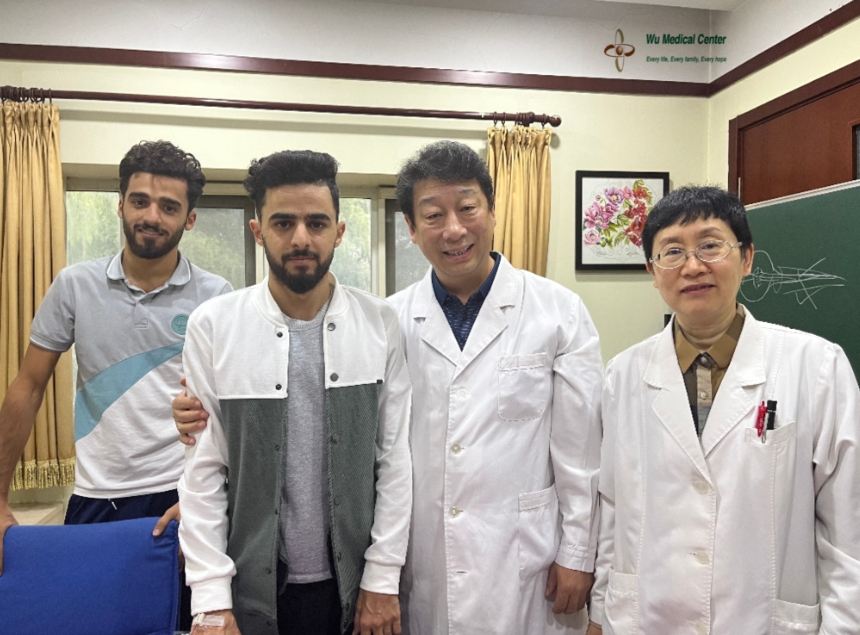Muhanad Maher Jarallah-Amyotrophic lateral sclerosis (ALS)-(Iraqi)
 Patient's Name: Muhanad Maher Jarallah
Patient's Name: Muhanad Maher Jarallah
Gender: Male
Age: 27 years old
Nationality: Iraqi
Diagnosis: Amyotrophic lateral sclerosis (ALS)
Admission Status:
The patient has been experiencing symptoms for about one and a half years before admission. He had noticed progressive weakness and muscle atrophy in both lower limbs, which subsequently progressed to involve his upper limbs. Upon diagnosis by local hospital, he was found to have "Amyotrophic Lateral Sclerosis (ALS)". Currently he was paralyzed and unable to stand and walk independently. He had difficulty raising his arms and hands, and had severe muscle atrophy. He did not have significant difficulty swallowing or choking when drinking water, and had no respiratory distress. He has been taking regular doses of riluzole, edaravone, and vitamin therapy, but has not seen any improvement.
Inpatient Examination:
The patient's pulse rate was 80 beats/minute, and his respiratory rate was 20 breaths/minute. He was of normal development and was thin in build. His lips were not cyanotic. His chest movement had a normal range of motion, and there was a slightly reduced breath sound at the bilateral lower lungs, without obvious dry or moist rales. His heart sounds were strong, regular, and there were no murmurs at any valve areas of the heart. His abdomen was flat and soft, and the liver and spleen were not palpable. There was no edema in the lower limbs.
Neurological Examination:
The patient was clear-headed and in good spirits. His speech was still relatively clear. The examination of cranial nerves was generally normal. His neck rotation and shoulder shrugging muscle strength were at approximately grade 5. His right shoulder joint range of motion was significantly restricted, and he could not raise his arm behind his body. His proximal upper limb strength was grade 3 on his left side and grade 3+ on his right side. His left hand grip strength was grade 3-; his interphalangeal muscle strength of his left fingers was grade 2+. His right hand grip strength was grade 3, and his interphalangeal muscle strength of his right fingers was grade 3-. His left lower limb muscle strength was grade 2-; his right lower limb muscle strength was grade 2+. The patient could not stand or walk. He has obvious muscle atrophy in his limbs, with visible muscle twitching. His muscle tone is generally normal. His limb sensation is also basically normal. His limb tendon reflexes are decreased. His bilateral Hoffmann reflexes are positive. His finger-to-nose and thumb-to-forefinger dexterity tests are slightly poor, with slower and clumsier movements in both hands during the task. He cannot complete the double leg heel knee shin tests due to weakness in his legs. His meningeal irritation signs were negative.
Treatment process:
The patient was admitted with a clear diagnosis of "amyotrophic lateral sclerosis". During his stay in the hospital, he received nerve stem cell therapy to repair motor nerve damage, mesenchymal stem cell therapy to enhance neurotrophic, endocrine, and immune support, and adjuvant therapy with drugs such as Edaravone, Liruzole, and Nerve Growth Factor (NGF). In addition, comprehensive rehabilitation treatment was also provided.
Post-treatment:
The patient's motor function has significantly improved, his limb muscle strength has significantly increased, his right shoulder range of motion is good, his arms can be freely raised to various positions of the body. His left upper limb proximal muscle strength is grade 4, his right upper limb proximal muscle strength is grade 4+; his left hand grip strength is grade 3+, his left hand interphalangeal muscle strength is grade 3; his right hand grip strength is grade 4-, and his right hand interphalangeal muscle strength is grade 3+. His core muscle strength has increased. His left lower limb muscle strength is grade 2+, and his right lower limb muscle strength is grade 3+. He can raise his right lower limb 20 cm off the bed by himself. He is able to walk independently for 5 meters. His energy, physical ability, and exercise endurance have all significantly improved.



